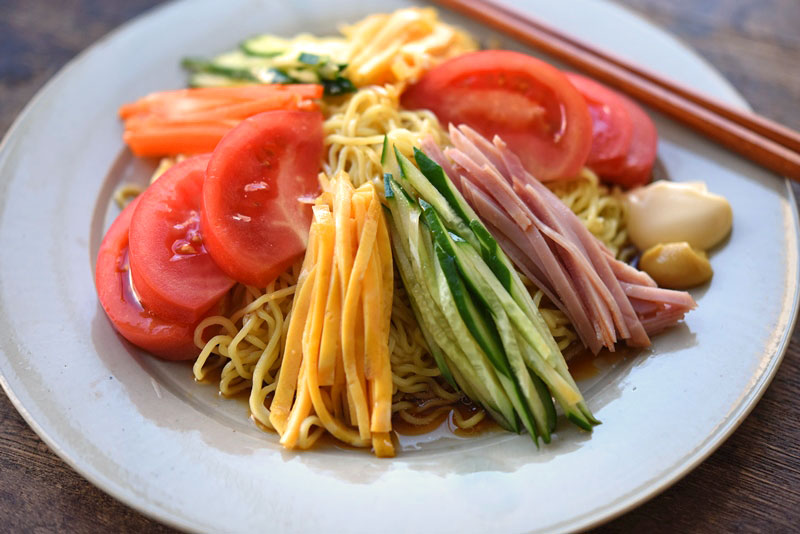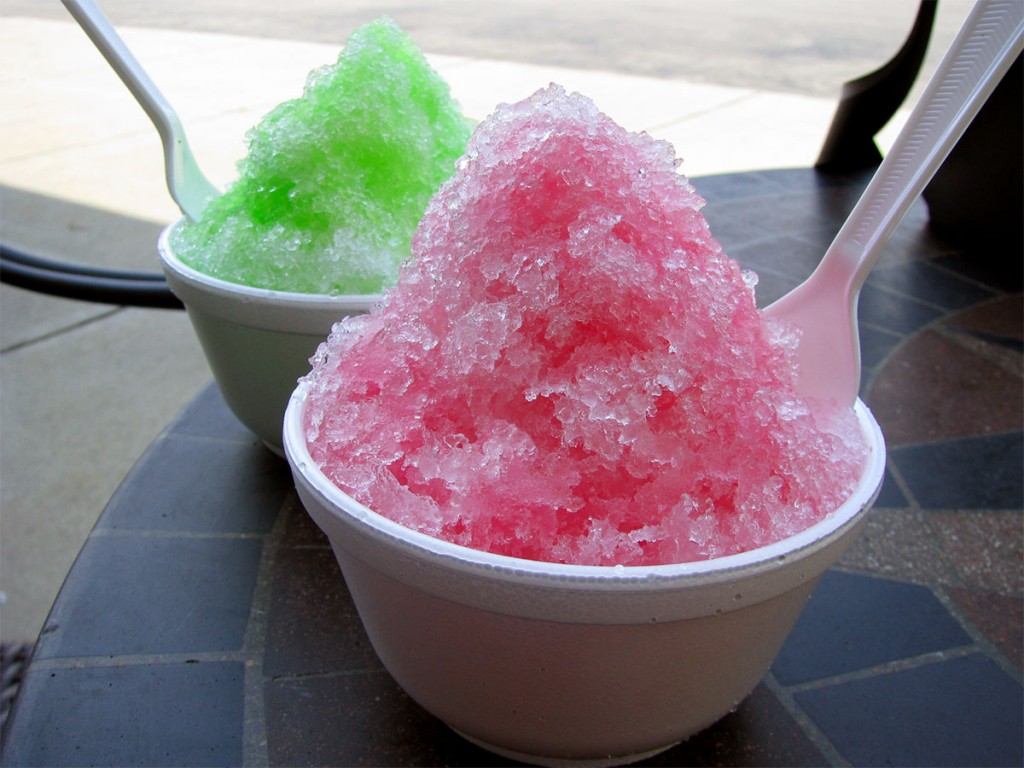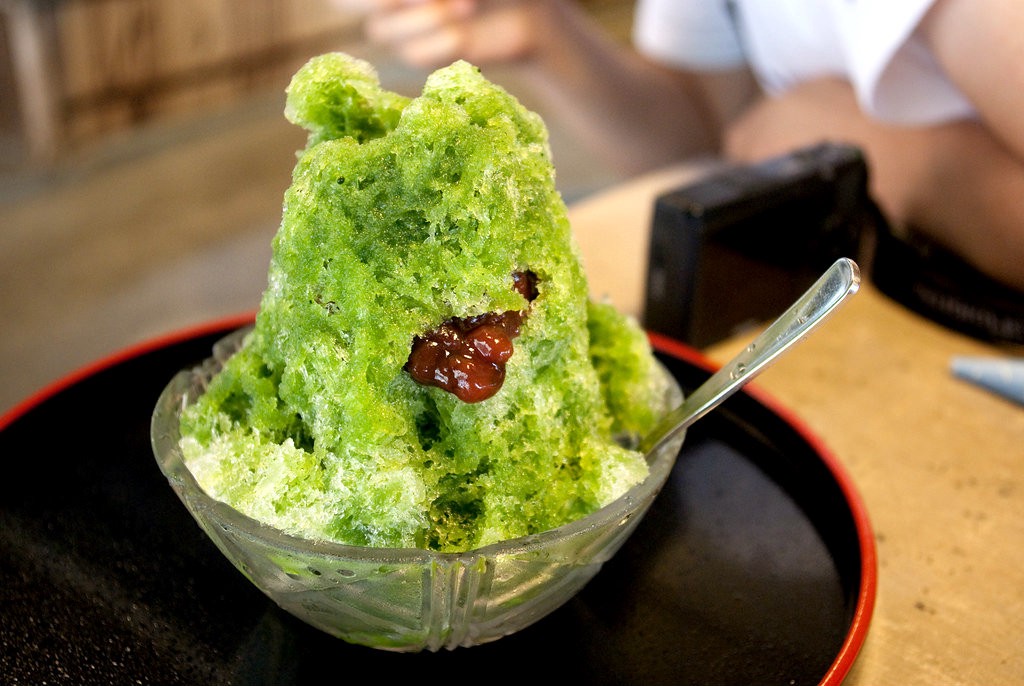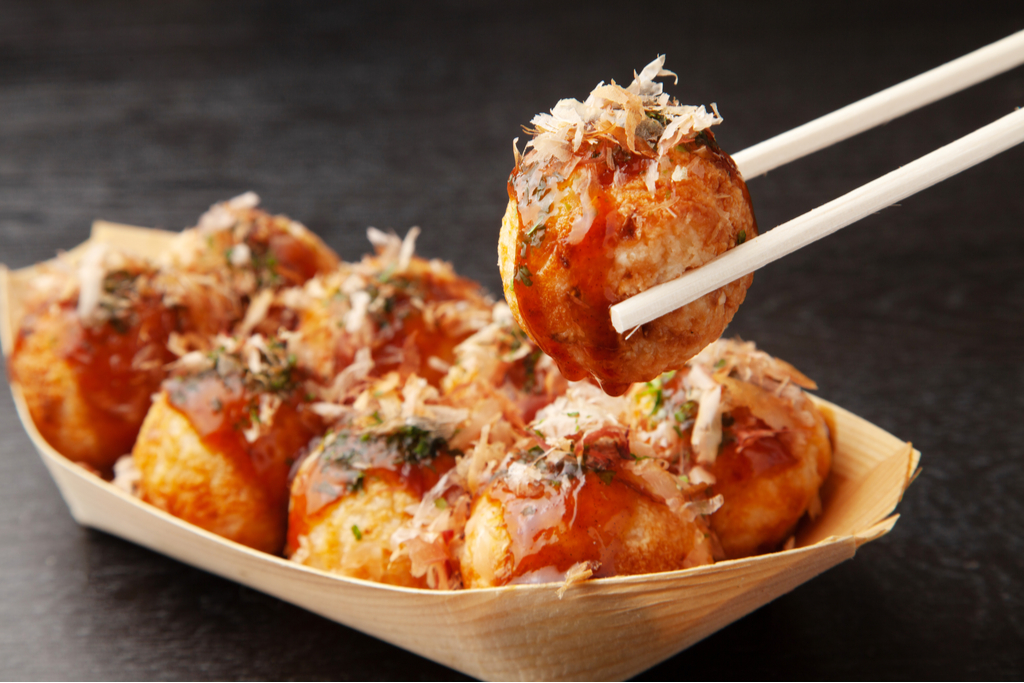Win a Free Trip to Japan!
Experience cherry blossoms and ancient temples
As the warm sun graces the land, summer in Japan brings a delightful array of culinary treasures. From traditional dishes bursting with flavor to refreshing cold noodles, the diversity of Japanese summer foods offers something for everyone. Seasonal fruits tantalize the taste buds, while popular street foods amplify the festive atmosphere. Additionally, regional specialties and cooling desserts provide the perfect respite from the heat. This exploration highlights the best summer delights that not only nourish but also celebrate the vibrant culture of Japan.
Traditional Summer Dishes in Japan
During the hot and humid summer months, Japanese summer foods take center stage. These dishes not only offer relief from the heat but also showcase Japan’s rich culinary heritage. Here are some traditional favorites:
- Somen: Thin white noodles served cold with a dipping sauce. Somen is often garnished with sliced green onions and grated ginger, making it a refreshing choice.
- Hiyashi Chūka: A chilled noodle dish topped with a variety of colorful vegetables, cooked proteins like chicken or shrimp, and a tangy sesame dressing. It’s both nutritious and visually appealing.
- Kakigōri: Shaved ice topped with flavored syrups and sometimes sweetened condensed milk. This delightful dessert is a must-try on sweltering days!
- Unagi: Grilled eel served with a sweet soy-based sauce, typically enjoyed on ‘Doyo no Ushi no Hi’ (the day when the heat is especially intense).
These traditional Japanese summer foods not only provide comfort but also celebrate the seasonal bounty. Embracing these dishes can elevate your summer dining experience while keeping you cool!

Refreshing Cold Noodles to Enjoy
One of the highlights of Japanese Summer Foods is the array of refreshing cold noodles that perfectly counter the heat. Here are some popular varieties:
- Soba: Buckwheat noodles served cold with a soy-based dipping sauce. They not only provide a satisfying bite but also offer health benefits, being high in protein and fiber.
- Udon: Thick wheat noodles served chilled, often accompanied by a light broth or dipping sauce. Their chewy texture makes them a crowd favorite during summer picnics.
- Hiyashi Chuka: Chilled Chinese-style noodles topped with a colorful assortment of ingredients like cucumber, ham, and eggs. This dish offers a great balance of flavors and textures.
- Somyeon: These thin, slippery noodles are often served with a slightly tangy sauce perfect for those sweltering days.
Comparison Table of Cold Noodle Dishes
| Noodle Type | Main Ingredients | Flavor Profile | Serving Style |
|---|---|---|---|
| Soba | Buckwheat | Nutty | Dipped or in broth |
| Udon | Wheat flour | Mild and chewy | Chilled or warm |
| Hiyashi Chuka | Wheat noodles + toppings | Fresh and colorful | Chilled with toppings |
| Somyeon | Wheat (thin) | Tangy and slippery | Chilled with sauce |
So, dive into these cool delights and experience the refreshing essence of Japanese Summer Foods!
Fruits of the Summer Season
Summer in Japan brings a vibrant array of seasonal fruits that delight the senses. These Japanese Summer Foods not only satisfy the palate but also provide refreshing relief from the heat. Here are some must-try summer fruits:
- Watermelon (Suika): A quintessential summer fruit, enjoyed in a variety of ways, from slices to cold soups.
- Peaches (Momo): Juicy and sweet, Japanese peaches are often categorized by their exceptional flavor and tenderness.
- Melons (Yubari King): Known for their rich sweetness, these melons are a luxurious treat often gifted in the summer.
- Cherries (Sakuranbo): Dark and sweet, cherries make for perfect snacks or toppings for desserts.
- Plums (Ume): Typically enjoyed pickled or as umeboshi, these fruits are refreshing and offer a tangy taste.
Comparison of Popular Summer Fruits
| Fruit | Flavor | Common Uses |
|---|---|---|
| Watermelon | Sweet | Slices, desserts |
| Peaches | Juicy & Sweet | Eaten fresh, in sweets |
| Melons | Rich & Sweet | Gifting, desserts |
| Cherries | Dark & Sweet | Snacks, toppings |
| Plums | Tangy | Pickling, condiments |
Enjoying these Japanese Summer Foods helps embrace the essence of summer while keeping cool!
Popular Summer Street Foods
When it comes to Japanese Summer Foods, street food becomes a delightful feature of summer festivals and events. Here are some must-try dishes that capture the essence of Japan during warm months:
- Yaki Imo: Roasted sweet potatoes that are soft and naturally sweet. Vendors serve them hot, perfect for a cool evening.
- Ikayaki: Grilled whole squid, often seasoned with soy sauce and served on a stick. This dish offers a savory taste and aroma that’s irresistible.
- Kakigori: Shaved ice topped with flavored syrups and condensed milk. It’s a refreshing treat ideal for hot days, enjoyed by kids and adults alike.
- Tako Takoyaki: Crispy on the outside and gooey on the inside, these octopus-filled balls come drizzled with tangy sauces, a flavor explosion you shouldn’t miss.
Comparison of Popular Summer Street Foods
| Food Item | Flavor Profile | Common Ingredients |
|---|---|---|
| Yaki Imo | Sweet | Sweet potatoes |
| Ikayaki | Savory | Squid, soy sauce |
| Kakigori | Sweet, fruity | Shaved ice, syrups |
| Tako Takoyaki | Savory, umami | Octopus, batter |
Indulging in these Japanese Summer Foods not only satisfies cravings but also immerses you in Japan’s vibrant culture. Enjoy the flavors of summer!

Regional Specialties to Explore
When it comes to Japanese Summer Foods, regional specialties hold a delightful place in the culinary landscape. Each area of Japan boasts unique dishes that reflect local ingredients and traditions, especially during the warmer months. Here are some must-try specialties:
- Hiyashi Chūka (Cold Chinese-style Noodles): Enjoyed in various regions, especially in Nagasaki, this dish features chilled noodles topped with colorful vegetables and protein, drizzled with a refreshing soy sauce or sesame dressing.
- Sōmen: Thin wheat noodles served cold, often from Kumamoto Prefecture, are perfect for hot summer days. Diners dip the noodles in a chilled soy sauce-based broth, adding garnishes like scallions and wasabi.
- Kōhaku Tsukemono: A pickled vegetable dish from Kyoto, combining cucumbers and daikon radish, offers a crunchy texture that’s ideal for summer meals.
- Asari Miso Soup: This clam miso soup, popular in coastal areas, highlights the freshness of local seafood and serves as a comforting dish during summer gatherings.
Exploring these Japanese Summer Foods provides a taste of Japan’s diverse culture while indulging in refreshing summer flavors!
Cooling Desserts for Hot Days
When the temperatures rise, refreshing desserts become a must-have in Japan. Here are some delightful Japanese Summer Foods that will help you beat the heat:
- Kakigori: This shaved ice treat comes topped with sweet syrups, condensed milk, and various toppings such as fruit and mochi. It’s a true summer favorite!
- Anmitsu: A refreshing bowl of agar jelly served with seasonal fruits, sweet red bean paste, and a drizzle of sweet syrup. Its striking presentation makes it visually appealing as well.
- Mizu Manju: These water mochi have a delicate texture and are filled with sweet red bean paste. They are typically chilled, offering a cool sensation that’s perfect for summer.
- Ice Cream Variants: From matcha to fresh fruit flavors, Japanese ice cream brands often provide unique tastes that capture the essence of summer.
These cooling desserts not only satisfy your sweet tooth but also represent some of the best Japanese Summer Foods to enjoy during the sweltering months. So, whether at a festival or a local shop, don’t miss out on these delightful treats!
Grilled Delights for Summer Gatherings
During the summer months, Japanese summer foods often include vibrant grilled dishes that draw crowds at gatherings. These grilled delights not only satiate hunger but also create a lively atmosphere. Here are some must-try options:
-
Yakitori:
- Grilled chicken skewers, seasoned with tare (a sweet soy sauce) or salt.
- Perfect for sharing and can include various parts of the chicken.
-
Yakiniku:
- Bite-sized pieces of marinated beef grilled to perfection.
- Often served with dipping sauces and vegetables.
-
Monjayaki:
- A savory batter cooked on a hot plate, allowing guests to customize toppings.
- Fun to prepare as a group activity.
-
Ebi Shioyaki:
- Grilled shrimp lightly salted and cooked until tender.
- Ideal seafood option for summer barbecues.
These Japanese summer foods not only showcase delicious flavors but also embody the essence of summer gatherings in Japan. Grilling outdoors with friends and family transforms meals into memorable experiences. Enjoy these grilled delights while staying cool and connected during the hot season!

Healthy and Light Summer Meals
When the temperature rises, indulge in healthy and light summer meals with Japanese Summer Foods. These dishes not only satisfy your appetite but also provide essential nutrients, keeping you energized during the hottest months.
Popular Choices:
- Soba Noodles: Made from buckwheat, these cold noodles are rich in fiber and protein. They are often served chilled with a light dipping sauce.
- Zucchini Salad: Thinly sliced zucchini drizzled with a citrus-soy dressing offers a refreshing crunch.
- Seaweed Salad: Low in calories and packed with vitamins, seaweed salad is a nutritious option that pairs well with various dishes.
- Cold Tofu (Hiyayakko): Silken tofu topped with green onions, ginger, and soy sauce provides a light, protein-packed meal.
Benefits of these Meals:
- Low-Calorie: Most of these Japanese Summer Foods are light and low in calories.
- Hydrating: Ingredients like cucumber and watermelon keep you hydrated.
- Easy to Prepare: Many of these dishes require minimal cooking, perfect for hot days.
Embrace the vibrant flavors of summer with these healthy options that celebrate traditional Japanese cuisine!
Signature Beverages to Beat the Heat
When the temperature rises in Japan, refreshing beverages become essential to beat the heat. Here are a few signature Japanese Summer Foods to quench your thirst:
-
Mugicha (Barley Tea)
- Served cold, mugicha offers a nutty flavor that hydrates effectively.
- Caffeine-free, making it a great option for all ages.
-
Matcha Lemonade
- A vibrant mix of matcha and lemonade, this drink combines earthy and zesty flavors.
- Rich in antioxidants, it keeps you energized throughout the day.
-
Calpis
- A unique yogurt-based drink, Calpis is mildly tangy and sweet.
- Enjoy it diluted with water or soda for a refreshing twist.
-
Shiso-infused Drinks
- Made from shiso leaves, this herbaceous beverage is both refreshing and aromatic.
- It can be consumed iced or hot, depending on personal preference.
These Japanese Summer Foods not only taste great but also offer hydration and refreshment for those hot summer days. Next time the temperature rises, try one of these delicious options and stay cool!
Festivals and Their Culinary Offerings
Japanese summer festivals, known as matsuri, are vibrant celebrations filled with traditional foods that capture the essence of the season. During these events, you can savor a variety of Japanese Summer Foods that not only delight the palate but also reflect cultural heritage. Here are some signature offerings you’ll encounter:
- Yaki Imo: Roasted sweet potatoes, enjoyed hot from the grill, are a festival favorite.
- Kakigori: Shaved ice topped with syrup and condensed milk, perfect for cooling down on hot summer days.
- Yakitori: Skewered grilled chicken, seasoned and cooked over charcoal, provides a savory experience.
- Takoyaki: Octopus balls, crispy on the outside and tender on the inside, offer a unique blend of flavors.
| Festival | Specialty Food |
|---|---|
| Gion Matsuri | Yaki Imo |
| Tenjin Matsuri | Kakigori |
| Kanda Matsuri | Yakitori |
| Otaue Matsuri | Takoyaki |
Thus, exploring Japanese summer foods during these festivals allows you to appreciate both the festivities and the flavors that come alive each season.
Frequently Asked Questions
What are some traditional Japanese summer foods?
Traditional Japanese summer foods often include items that are light and refreshing due to the heat. Popular choices are ‘somen’ (thin wheat noodles served chilled), ‘yakitori’ (grilled chicken skewers), ‘reimen’ (cold noodles), and ‘hiyashi chūka’ (cold Chinese-style noodles). Additionally, summer fruits like watermelon and peaches, as well as summer vegetables such as cucumbers and eggplants, are commonly featured in numerous dishes, providing a seasonal touch to Japanese cuisine.
Are there any unique ingredients used in Japanese summer dishes?
Yes, Japanese summer dishes often utilize unique ingredients that highlight the season’s produce. For instance, shiso leaves, a fragrant herb, are frequently used to add a fresh note in salads or as a garnish for cold dishes. Yuzu, a citrus fruit, is also a popular ingredient that adds a zesty flavor to drinks and salads. Furthermore, different types of fish such as ayu (sweetfish) are prized in summer, showcasing the local aquatic bounty available during the warm months.
How can I enjoy Japanese summer foods if I’m not in Japan?
If you’re not in Japan but want to enjoy Japanese summer foods, consider visiting local Japanese restaurants that feature seasonal menus. Many places offer dishes like somen and hiyashi chūka which are perfect for warm weather. Alternatively, you can try making these dishes at home using online recipes. Visit Asian grocery stores to source authentic ingredients such as mirin, yuzu, and shiso leaves, allowing you to create an authentic Japanese summer culinary experience in your own kitchen.
What beverages pair well with Japanese summer foods?
When enjoying Japanese summer foods, it’s ideal to pair them with beverages that complement the light and refreshing nature of the dishes. Traditional drinks include ‘mugicha’ (barley tea), served cold for a refreshing option. Additionally, ‘sake’ can be enjoyed chilled, offering a subtle flavor that enhances the dining experience. For non-alcoholic options, you might try yuzu soda or iced matcha, both of which provide a deliciously refreshing contrast to the savory summer flavors.
